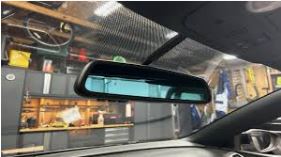The Northern Lights, or aurora borealis, are one of nature’s most breathtaking spectacles. This stunning display of vibrant colors swirling in the night sky is caused by the interaction of solar wind particles with Earth’s magnetic field, lighting up the sky in shades of green, purple, pink, and even red. If witnessing the aurora borealis is on your bucket list, here’s a guide on when and where to experience this natural phenomenon at its best.

When to See the Northern Lights
While the Northern Lights can occur year-round, certain times of the year and specific conditions make sightings far more likely. To maximize your chances, consider the following:
- Best Time of Year:
- Fall to Early Spring (September to March) is the prime time for viewing the aurora. This is when the nights are longest and darkest, especially around the winter solstice in December. Dark skies are essential for seeing the Northern Lights clearly.
- Clear, Dark Skies:
- The auroras are best viewed on cloudless nights, far from artificial light sources. The less light pollution, the better. Urban environments are not ideal, so aim to be in rural areas or small towns where the skies are clearer.
- Time of Night:
- The Northern Lights are typically visible between 10 p.m. and 2 a.m. However, this can vary. Some experts recommend staying outside for several hours and being patient—auroras can come and go quickly or last for long periods.
- Solar Activity:
- The Northern Lights are influenced by solar activity, which varies throughout the year. High solar wind activity and geomagnetic storms increase the likelihood of auroral displays. There are apps and websites that track solar activity and give you real-time aurora forecasts, such as the NOAA Space Weather Prediction Center.
- Auroral Cycles:
- The Northern Lights are also affected by an 11-year solar cycle, where solar activity waxes and wanes. Solar maximums (when the sun’s activity is at its highest) occur every 11 years, with the next peak expected around 2025, offering a period of enhanced auroras.
Where to See the Northern Lights
The aurora borealis is best viewed in regions near the Earth’s magnetic poles, primarily in high-latitude areas known as the “Auroral Oval.” Here are some of the best destinations for Northern Lights sightings:
- Norway:
- Northern Norway, particularly the area around Tromsø, is one of the most famous places to catch the Northern Lights. The Lofoten Islands and Alta are also excellent spots. Norway offers great infrastructure and opportunities for other winter activities like dog sledding and snowshoeing.
- Iceland:
- Iceland’s unique landscape of glaciers, volcanic plains, and waterfalls makes it a dream location to see the Northern Lights. Reykjavik offers decent sightings, but for the best experience, head to remote areas like Thingvellir National Park or the Westfjords.
- Finland:
- The northern region of Finnish Lapland is known for its spectacular displays of the aurora. Towns like Rovaniemi and Kittilä are popular spots. You can even stay in glass igloos or cabins, where you can watch the lights from the comfort of your bed.
- Sweden:
- Swedish Lapland, particularly the Abisko National Park, is renowned for its clear skies and frequent auroras. The area boasts an “aurora sky station,” specifically designed for watching the Northern Lights. The region’s pristine wilderness adds to the experience.
- Canada:
- In Canada, the northern provinces like Yukon, Nunavut, and the Northwest Territories offer some of the most reliable sightings. Whitehorse in Yukon and Yellowknife in the Northwest Territories are both fantastic locations with regularly clear skies.
- Alaska, USA:
- Alaska’s vast wilderness provides a perfect setting for viewing the Northern Lights. The city of Fairbanks is one of the most accessible and popular spots. For an off-the-beaten-path adventure, you can also head to Denali National Park or the Brooks Range.
- Scotland:
- While less known, northern Scotland can also offer aurora sightings during periods of intense solar activity. Caithness and the Isle of Skye are two key areas where the Northern Lights can occasionally be seen.
- Greenland:
- Greenland’s sparsely populated landscape is ideal for aurora chasers. Kangerlussuaq is one of the most reliable places for Northern Lights viewing, and the isolation means minimal light pollution.
Tips for an Unforgettable Experience
- Dress Warmly: Northern Lights destinations are usually in extremely cold regions, so dressing in layers is essential. Thermal clothing, thick gloves, and hats will help you stay comfortable while waiting for the lights to appear.
- Be Patient: The aurora borealis is a natural phenomenon, and as with all things in nature, it doesn’t always appear on demand. Sometimes you may need to wait hours or even multiple nights to catch a glimpse, but the wait is always worth it.
- Photography: Bring a camera with manual settings. A tripod is essential for capturing long exposures, which are often needed to photograph the lights. You can use apps to track aurora activity and cloud cover to maximize your chances.
Seeing the Northern Lights is an awe-inspiring experience that should be on every travel enthusiast’s list. While planning your trip, remember that patience, preparation, and choosing the right location are key. Whether you’re venturing to the Arctic Circle or seeking out darker skies closer to home, the rewards are magical moments of light dancing across the heavens—a sight you’ll never forget.




